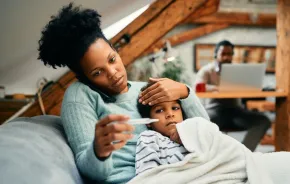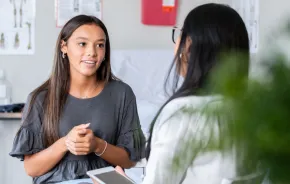
Editor's note: This article was sponsored by Eye Associates Northwest.
Sending kids outside to play is great for their physical and mental health. Now, doctors say spending time outdoors can also protect their vision. Multiple studies show that outdoor play is one of the best ways to prevent or slow the development of myopia, or nearsightedness, a condition affecting more children than ever before.
What is myopia?
Myopia is another term for nearsightedness, or vision that’s only clear at close range. It results from an overly elongated eyeball that focuses light in front of the retina, causing blurry vision.
Over the last few decades, myopia has become an epidemic. Between 1971 and 2004, rates jumped from 25 percent to 41 percent for Americans ages 12–54; a new study found 59 percent of American teens are nearsighted. In Asian countries, it is estimated that 85 to 90 percent of children are myopic. Researchers estimate that around half the world’s population will be myopic by 2050.
At first sight
Babies are born farsighted, with shorter eyeballs that naturally lengthen as they grow. Normal growth patterns result in a natural shift toward nearsightedness in adulthood. For most, nearsightedness is more of a mild nuisance than a medical concern.
But when myopia begins in childhood, particularly at very young ages, doctors get more concerned. Myopia tends to progress with age, so a toddler with myopia will likely become progressively more nearsighted each year. Higher degrees of myopia place patients at higher risk for glaucoma, retinal detachments and complications with cataract surgery in later adulthood, says Thao Phuong Le, M.D., an ophthalmologist at Eye Associates Northwest, PC in Seattle’s First Hill neighborhood.
Why are more children being affected?
What’s driving the increase in myopia? Some kids can curse their genes; when both parents are nearsighted, a child’s risk of developing myopia nearly triples. But the dramatic increase in myopia can’t be entirely explained by genetics, says Anita Lam, O.D., an optometrist at Eye Associates Northwest, PC in Ballard.
Researchers estimate that around half the world’s population will be myopic by 2050.
Increased screen time, longer hours spent on homework and even more time spent reading at younger ages are all factors driving the increase, Lam says. “Kids are spending more time on devices, so they’re focusing at close range for extended periods of time, and that’s driving up rates of myopia in childhood.”
Seeing signs
Sitting too close to the television, squinting, frequent headaches or holding devices and books very close to the face are signs a child might be nearsighted. When a child shows these signs, or if one or both parents are nearsighted, a complete eye examination is in order. Taking a child to a vision provider, instead of waiting for a school vision screening, means kids get a more comprehensive checkup and can begin therapeutic interventions sooner, notes Lam.
However, the signs may not be so obvious, especially when a child has poor vision in just one eye. “In these cases, the child compensates with their better-seeing eye, masking the blurry vision in the weak eye,” says Lam. “Parents can play games like ‘I Spy’ and do so with their child covering one eye at a time to spot distant objects in order to observe if the child notices any differences in their vision in either eye.”
Slowing the trend
Per the American Optometric Association, early diagnosis improves outcomes for myopic kids. Diagnosing some children used to be difficult, because traditional vision exams present problems for very young kids, those who aren’t verbal, or those with special needs, but new eyeball-scanning devices can help spot vision abnormalities in seconds. “Our son had this done at his 3-year wellness check and it showed that something was off. I appreciated how easy it was for him,” says Kira Miller of Tacoma.
There are multiple ways to slow myopic progression that have been shown to be effective with continued treatment during the at-risk years of childhood, says Lam. Daily atropine eye drops are a well-researched and widely used (though not FDA-approved) treatment to slow the progression of myopia. The higher concentrated drops that were initially used in studies caused difficulty in focusing, skin irritation and sensitivity to light, but new research shows that a lower-dose (0.01 percent) concentration is just as effective and results in fewer side effects.
Parents can also consider ortho-K contact lenses, which are hard lenses worn overnight to reshape the eye and correct myopic vision. Research shows these lenses are safe and effective when used properly, says Lam. “Somewhat like wearing an orthodontic retainer at night, the lenses can be effective to control myopia when a child wears them consistently at bedtime, and provide clear vision during the day when they’re not wearing the lenses.”
But the best way to prevent or slow the development of myopia is also safe, simple and free: Send kids outside. Research shows that eye doctors recommend outdoor time more than any other protective intervention for myopia. More research is needed to determine just how time spent outdoors helps protect vision, Lam says. “It may have something to do with exposure to sunlight or vitamin D, but more studies are needed.”
“When kids spend time outside, they give their eyes a break from close focus. I recommend 90 minutes of time outside daily, putting devices away around one hour before bedtime, and using the 20/20/20 rule: Give eyes a break from reading, homework or screens every 20 minutes by looking at an object 20 feet away for 20 seconds,” says Lam.
For now, the recommendations are clear. We’ll see you outside.
|
Sponsored by: |
 |











